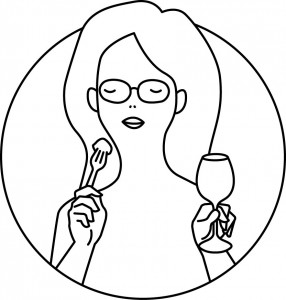First, an embarrassing confession.
When I started my first job after grad school, my new colleagues took me out to a Thai restaurant, a brand-new experience for me. When I saw the fork and knife at my place setting, I figured they just assumed their largely non-Asian clientele weren’t comfortable with chopsticks. Thinking I was oh-so-worldly, I asked for the traditional Asian implements. The server looked down her nose at me and haughtily announced, “In Thailand, we don’t use chopsticks.”
Blushing, I resolved never to make that kind of mistake again.
Wherever we go out to eat, we want to be gracious and not offend our hosts. This can be complicated when we’re dealing with a new culture whether it be at a restaurant in our hometowns or on the other side of the world.
So, here are my international eating etiquette tips. When in doubt, just observe the people around you and follow suit. These tips will give you ideas of what to look out for.
Hands
- When you walk into some restaurants, even fast food joints, in Malaysia, Egypt, and other Muslim countries, you’ll often see a sink station along one wall. No, it’s not for the staff to clean the tables. The sink is for patrons to wash their hands before they eat.
- Many countries believe that the left hand is dirty. Whether you’ve washed it recently or not, avoid using your left hand to touch food, utensils, and plates in all Muslim countries. The same rule applies in South India, in many parts of Asia, and in several African countries, including Tanzania and Kenya. Hold your fork or spoon in your right hand, and keep your left in your lap. Yes, you can still use both hands with a fork and knife.
- Bolivia, Brazil, and the Netherlands, among other spots, residents believe that touching food with your hands is uncouth. They eat fruit, pizza, and even sandwiches with a fork and knife. In Chile, the no-hands rule applies to everything eaten sitting at the table.
- Russia, Australia, Indonesia, Mexico, and many European countries consider it rude to put your hands in your lap while eating. Instead, rest your wrists on the edge of the table when you’re not holding your knife and fork.
- Regardless of the country you’re in, when someone offers you something with two hands, it almost always means you should accept it with two hands.
Chopsticks, forks, and knives
- It isn’t exactly true that they don’t use chopsticks in Thailand. They’re perfectly acceptable for noodle dishes and street food. But Thais do pride themselves on their history. The King of what was then Siam adopted the fork and spoon in the 19th century. This was one of many modern western practices he implemented in the country as a way of avoiding colonization, as all of Thailand’s neighbors had been. The fork and knife are still standard in Thailand, though it’s also okay to hold a rolled ball of sticky rice in your right hand and sop up the curry.
- Instead place them horizontally on a plate or on chopstick rests. The thought behind this comes from Buddhist culture where upright chopsticks represent death, as they echo how incense sticks are placed when giving offerings at a temple.
- Generally, keep your chopsticks to yourself. At some more formal gatherings, you might receive two sets of chopsticks. One is for food from your plate to your mouth, and the other is for picking up food from community platters and bowls on the lazy Susan (don’t mix them up!). In China, though,diners might show affection and friendship by placing a choice morsel on your plate with their chopsticks. In Japan, however, passing anything with chopsticks is only done at funerals.
- In Thailand, Indonesia, and Malaysia use the end of the fork to push food onto your spoon, and only put your spoon, never your fork, into your mouth.
- In Italy, twirl your fork to wrap long noodles around it. Only children twirl their fork on a spoon. Never cut your pasta.
- In France, use the provided knife to cut a slice of cheese, but never “cut off the nose”, i.e. the point of the cheese. The idea is to ensure every morsel has the balance of flavor found from the outside crust to the mild interior. You’re spoiling others’ experience if you cut the point.
- In Germany, use only the side of your fork, never your knife, to cut through potatoes. When you use your knife, you’re telling the chef he or she has undercooked the potatoes.
Plates and bowls
- In France, you’ll rarely be given a bread plate. They expect that you’ll put your bread on the table beside your dinner plate. It’s perfectly fine to use your baguette to get those last few drops of that delicious sauce.
- If you’re not given a side plate for bones or shells in China, it’s not a problem to leave them on the tablecloth. Don’t put them in your rice bowl. Be prepared to see some people in China and Taiwan spit those bones and shells onto the floor or table, as this is thought to be more sanitary than sticking your fingers in your mouth to remove them.
- When you’re served an entire fish on a plate in China, don’t flip it over when you’ve finished eating the top side. Instead, remove the bone (the waiter can help), to get at the rest of the meat. Otherwise you’re wishing bad luck on the table.
- It’s okay in many Asian countries to pick up your rice bowl and bring it close to your mouth to eat from it. In Vietnam, people may think you’re lazy if you leave it on the table.
Would you like something more?
- If you haven’t been given a specific condiment, it’s generally because, in that country, the dish you’re having is not eaten with it. So, if it’s not on the table, don’t ask for it. Personal preferences don’t matter; in Italy, for example, seafood pasta is simply not eaten with cheese. Even asking for salt and pepper is rude in many places, as it implies the chef didn’t season the food properly.
- When you clean your plate in China, you’re indicating that you’re still hungry. If you do it as the meal is wrapping up, you’re practically shouting that the host hasn’t provided enough food.
- In China, when you don’t want to eat any more, show this by leaving a little bit of food on your plate. This is common in many countries, such as the Philippines, Thailand, Russia, and in parts of northern Africa. In Egypt, for example, it is a sign of wealth to leave food on your plate and for hosts to have more food to offer.
- In countries such as Turkey and South Africa, however, they deem it wasteful to not clean your plate. Likewise, the French see food left on your plate as impolite.
- If you compliment the food in Bolivia, though, residents interpret it as a request for more. If you don’t want seconds, wait until the meal is over before you sing any praises.
Alcohol
- In China, toasts with very strong rice wine are made often. Don’t be fooled into thinking a shout of “ganbei!” means cheers (as the similar sounding “campai” does in Japan). The direct translation is “bottoms up” and when someone toasts with it, you’re expected to down your whole glass. Women, thankfully, have some leeway. If the rice wine is not to your taste, you’re better off to refuse alcohol at the start of the meal than to stop toasting with it part way through.
- Whatever you toast with in China, there’s a subtle way to show respect to the other person. When you clink, put the rim of your glass at a lower level than the other person’s. If they’re Chinese, they’ll likely immediately lower their glass too, which often results in a giggling race to see whose glass can touch the floor first.
- It’s fine to accept alcohol when offered in a Muslim country, but don’t ask for it because, traditionally, Muslims don’t drink alcohol.
- In France, an empty wine glass will always be refilled, so leave it almost full if you’ve had enough (as opposed to being polite by cleaning your plate).
- In most countries, never refill your own glass. In South Korea, though, it is okay for a woman to pour her own drink, or to pour drinks for men, but never for another woman.
- In the UK, it is important to pass the port to the left, supposedly a nod to naval tradition.
- Wine pouring etiquette in Argentina is subtly complex … best to simply avoid it and let someone else do the pouring.
Coffee and tea
- The Italians and French serve cappuccino, café crème, and other milky drinks in the morning only (best accompanied by a cornetto or croissant). The prices are higher if you sit at a table or on the terrace, lower if you stand at the counter (you’ll also meet more locals this way). Ordering caffe or café typically translates to an espresso.
- Many people outside of North America consider it rude to refuse an offer of tea. If you don’t want a refill, leave your cup at least half full.
- In Morocco, leave the sprigs of mint in your tea cup. And be prepared for an elaborate pour from a great height—it’s to properly aerate the tea, not a performance for tourists.
- In China, it’s very rude to fill your own cup with tea. If your cup is empty and no one has noticed (which is unlikely!), pour tea for everyone around you. If they still don’t notice (but I can’t imagine, unless they’re not Chinese), top up everyone’s cups, and then you can fill your own.
- A two-fingered tap on the table is a way of saying thanks in China.
- In African and Middle Eastern countries with Bedouin cultures, signal that you don’t want any more coffee by a side-to-side shaking/tilting motion with your cup. You’ll see it done by others, and it’s easy to copy.


Leave a Reply